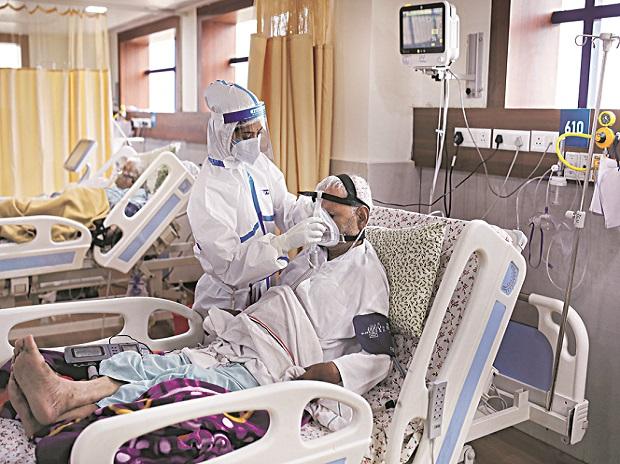New research found patients hospitalised with COVID-19 had a higher risk of stroke, compared with patients who had similar infectious conditions such as influenza and sepsis in prior studies.
Those who had an ischemic stroke were more likely to be older, male, Black race, or have high blood pressure, Type 2 diabetes or an irregular heartbeat (atrial fibrillation) compared with other COVID-19 patients, according to late-breaking science presented today at the American Stroke Association's International Stroke Conference 2021.
The meeting held virtually, March 17-19, 2021 and is a world premiere meeting for researchers and clinicians dedicated to the science of stroke and brain health.
For this analysis, researchers accessed the American Heart Association's COVID-19 Cardiovascular Disease Registry to investigate stroke risk among patients hospitalized for COVID-19, their demographic characteristics, medical histories and in-hospital survival. The COVID-19 Registry data pulled for this study included more than 20,000 patients hospitalized with COVID-19 across the U.S. between January and November 2020.
"These findings suggest that COVID-19 may increase the risk for stroke, though the exact mechanism for this is still unknown," said lead study author Saate S. Shakil, M.D., a cardiology fellow at the University of Washington in Seattle. "As the pandemic continues, we are finding that coronavirus is not just a respiratory illness, but a vascular disease that can affect many organ systems."
Two hundred eighty-one people (1.4 per cent) in the COVID-19 CVD Registry had a stroke confirmed by diagnostic imaging during hospitalization. Of these, 148 patients (52.7 per cent) experienced an ischemic stroke; 7 patients (2.5 per cent) had transient ischemic attack (TIA); and 127 patients (45.2 per cent) experienced a bleeding stroke or unspecified type of stroke.
The analysis of COVID-19 patients also found:- Those with any type of stroke were more likely to be male (64 per cent) and older (average age 65) than patients without stroke (average age 61).
Forty four per cent of patients who had an ischemic stroke also had Type 2 diabetes vs. about one-third of patients without stroke, and most of the ischemic stroke patients had high blood pressure (80 per cent) compared to patients without stroke (58 per cent);
Eighteen per cent of ischemic stroke patients had atrial fibrillation, while 9 per cent of those without stroke also had atrial fibrillation;
Patients who had a stroke spent an average of 22 days in the hospital, compared to 10 days of hospitalization for patients without stroke; and
In-hospital deaths were more than twice as high among stroke patients (37 per cent) compared to patients without stroke (16 per cent).
In addition, stroke risk varied by race. Black patients accounted for 27 per cent of the patients in the COVID-19 CVD Registry pool for this analysis; however, 31 per cent of ischemic stroke cases were among Black patients.
"We know the COVID-19 pandemic has disproportionately affected communities of colour, but our research suggests Black Americans may have a higher risk of ischemic stroke after contracting the virus, as well," Shakil said. "Stroke on its own can have devastating consequences and recover from COVID-19 is often a difficult path for those who survive. Together, they can exact a significant toll on patients who have had both conditions."
Shakil added, "It is more important than ever that we curb the spread of COVID-19 via public health interventions and widespread vaccine distribution.
(Only the headline and picture of this report may have been reworked by the Business Standard staff; the rest of the content is auto-generated from a syndicated feed.)
 Dear Reader,
Dear Reader,
Business Standard has always strived hard to provide up-to-date information and commentary on developments that are of interest to you and have wider political and economic implications for the country and the world. Your encouragement and constant feedback on how to improve our offering have only made our resolve and commitment to these ideals stronger. Even during these difficult times arising out of Covid-19, we continue to remain committed to keeping you informed and updated with credible news, authoritative views and incisive commentary on topical issues of relevance.
We, however, have a request.
As we battle the economic impact of the pandemic, we need your support even more, so that we can continue to offer you more quality content. Our subscription model has seen an encouraging response from many of you, who have subscribed to our online content. More subscription to our online content can only help us achieve the goals of offering you even better and more relevant content. We believe in free, fair and credible journalism. Your support through more subscriptions can help us practise the journalism to which we are committed.
Support quality journalism and subscribe to Business Standard.
Digital Editor

RECOMMENDED FOR YOU